Best Way to Paint Corners Different Colors
This post may contain affiliate links. We may earn a small commission from purchases made through them, at no additional cost to you.
For beginners in painting, mixing colors can be quite confusing. Not only the color theory, but also the different painting media are important. Here you get an insight into this topic and we show you the most important tips and tricks to mix your colors.
- 1 What Are the Primary Colors
- 2 Mixing of Secondary Colors
- 3 Mixing of Tertiary Colors
- 4 The Complementary Colors
- 5 Color Mixing Chart
- 6 Mix the Paint: The Best Tips
- 6.1 User our Free Online Color Mixer
- 6.2 Primary colors cannot be mixed by the user
- 6.3 Mixing primary colors creates secondary colors
- 6.4 Which shades of the primary colors should be mixed?
- 6.5 The Mixing Ratio for Primary Colors
- 6.6 Are there Different Shades of Red, Blue and Yellow to Buy?
- 6.7 Bright Colors Due to Individual Color Pigments
- 6.8 Preserving Tertiary Colors
- 6.9 The Mixing Ratios of Light and Dark Colors
- 6.10 The Optimal Combination of Opaque and Covering Colors
- 6.11 Mixing of White and Black Color
- 6.12 What are Complementary Colors?
- 6.13 Do not Mix Colors Completely
- 6.14 Mixing Colors – Warm and Cool Shades
- 6.15 Mixing Clean Green
- 6.16 Which Color Shades are Suitable for Mixing Clean Colors?
- 6.17 Mixing Gray and Brown
- 6.18 What Colors Make Brown
- 6.19 How to Make Gray
- 6.20 What Colors Make Purple
- 6.21 What Colors Make Orange
- 6.22 What Colors Make Green
- 6.23 What Colors Make Pink
- 6.24 Tint Down
- 6.25 Clean Tertiary Colors
- 6.26 Test the Colors Before Painting
- 6.27 Optical Mixing of Colors (Divisionism)
- 6.28 Set Certain Colors Next to each Other For a Higher Intensity
- 6.29 Depth and Space Through the Use of Warm and Cool Colors
- 6.30 Mixing Acrylic Colors
What Are the Primary Colors
The primary colors are the three color shades that are not mixable and therefore have to be bought ready to use. From these three colors and white, basically, any desired color can be mixed by yourself. The three primary colors are:
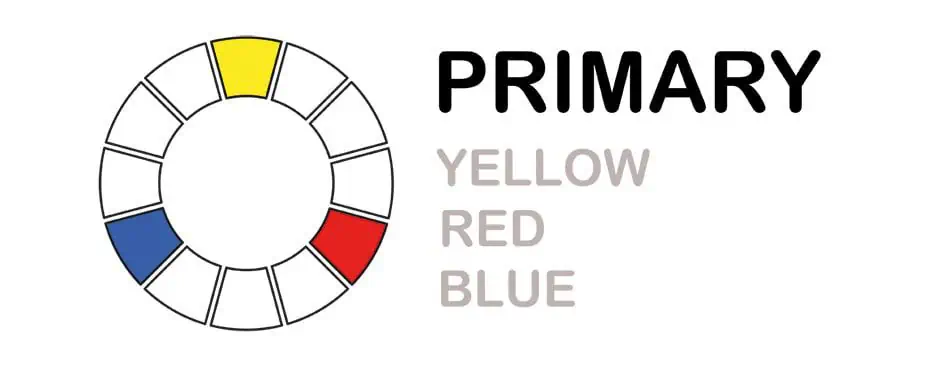
aekikuis / shutterstock.com
- Red – Purple
- Yellow – e.g. cadmium yellow
- Blue – e.g. ultramarine blue
Decisive for mixing are the mixing ratios with which you mix the primary colors and the addition of white to control the brightness. First use cheap colors to try out the mixing and get a feel for the most important shades.
Mixing of Secondary Colors
Secondary colors are obtained by mixing two of the three primary colors together.
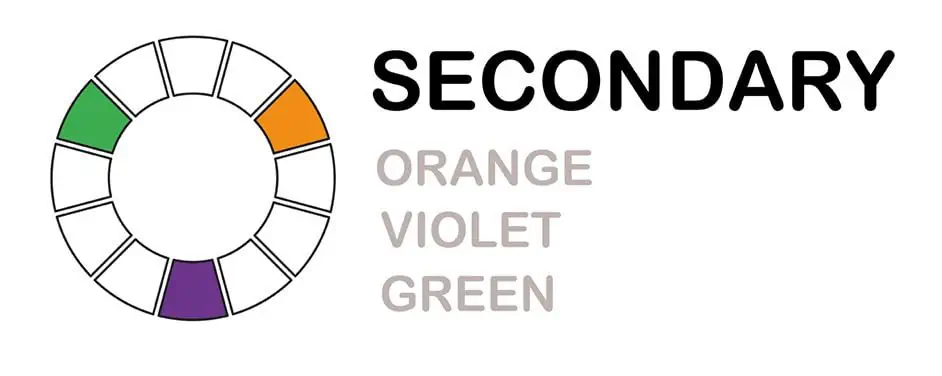
aekikuis / shutterstock.com
- Purple : Red and blue
- Orange : Red and yellow
- Green : Blue and yellow
If you mix all three primary colors together, you will get black.
When mixing colors, the choice of primary colors is of course important. There is a variety of red, yellow and blue shades, which in combination also result in different secondary colors. If you would like to mix your own colors, you should get different shades from each primary color to be as flexible as possible when mixing.
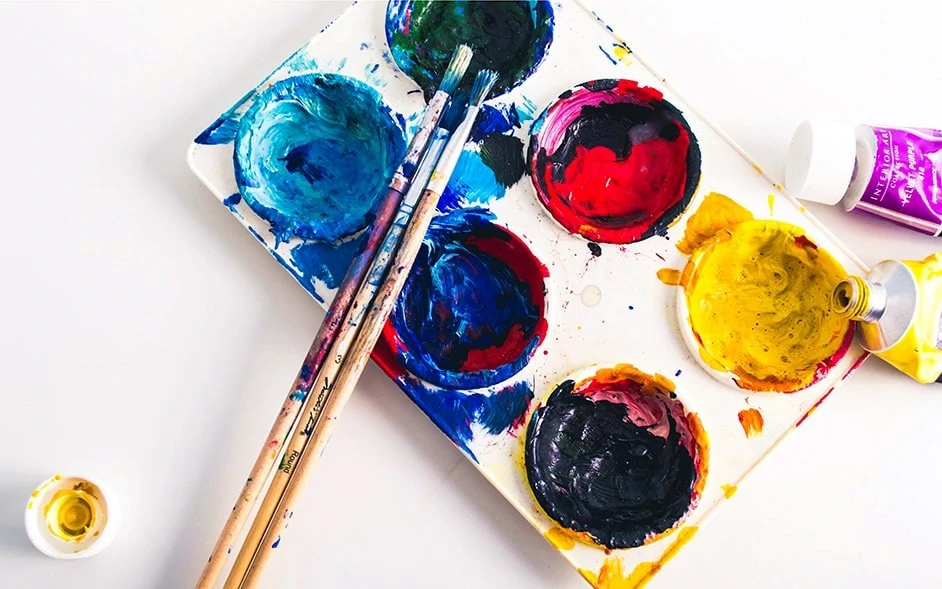
Mixing of Tertiary Colors
The tertiary colors are created by mixing two adjacent colors of the color circle of the primary and secondary colors. These colors are also called fractional colors because they are not as bright and distinct as the primary and secondary colors.
Since in nature mainly these color tones are found, the tertiary colors are very important for natural-looking pictures. Examples of tertiary colors:
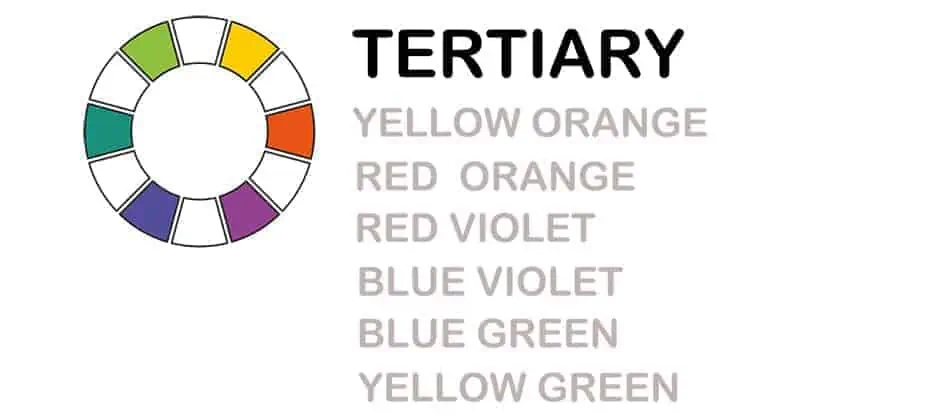
aekikuis / shutterstock.com
- Blue-Purple
- Yellow-Green
- Green-Blue
- Orange-Yellow
- Red-Orange
- Purple-Red
The color wheel of Cox is a good way to show you the color combinations. There you can easily see which colors you have to mix to get the desired color.
The Complementary Colors
If you take a closer look at color theory, you will learn that every color of the color circle has a complementary color. For each of the three secondary colors, the complementary color is the primary color that was not used in the production.
Knowing about complementary colors can help you choose a suitable color to influence contrasts and guide the viewer's perception (see also: Complementary Contrast).
With regard to the secondary colors, the following complementary colors result:
- The complementary color of green is red
- The complementary color of orange is blue
- The complementary color of violet is yellow
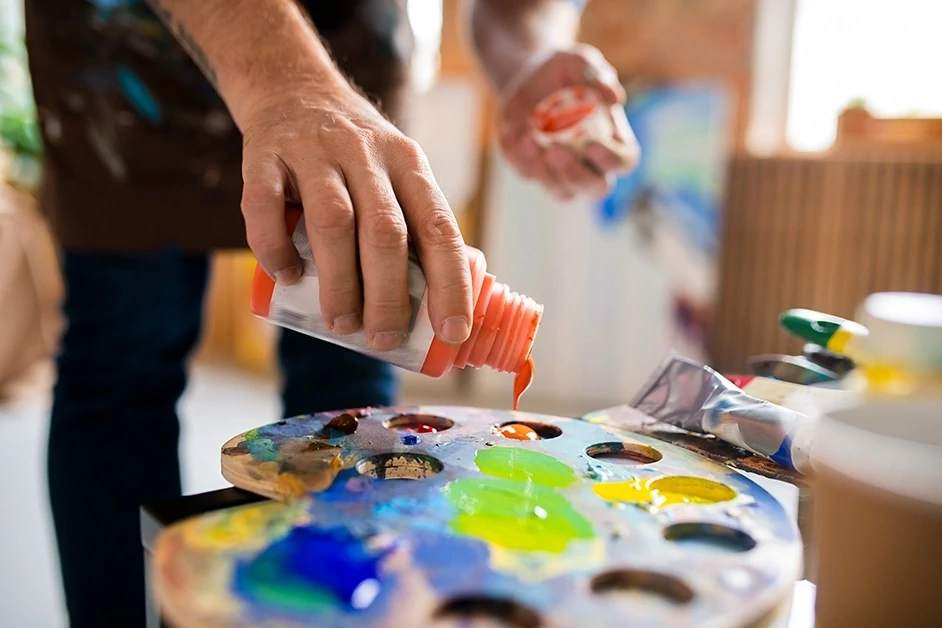
Color Mixing Chart

Mix the Paint: The Best Tips
User our Free Online Color Mixer
We have programmed a Color Mixer to mix your desired colors to see the immediate result, share the color mix or save the color as an image. Have a look here: Color Mixer.
Primary colors cannot be mixed by the user
The three basic colors, also called primary colors, cannot be created by mixing other colors. These primary colors are red, blue and yellow.
Mixing primary colors creates secondary colors
If you combine two primary colors with each other, you get a so-called secondary color. If you mix red and blue, you get violet, yellow and red become orange, blue and yellow become green. If you mix all the primary colors together, you get black.
Which shades of the primary colors should be mixed?
This depends on which secondary color and shade you want to create. If you mix a deep cadmium yellow with a red ocre, you will get a different shade of orange than with a titanium yellow. You can get a different secondary color pair with any combination of two primary colors.
The Mixing Ratio for Primary Colors
To get orange, you mix the primary colors red and orange. The mixing ratio of these two colors determines which shade of orange you will get after mixing. For example, if you use more red than yellow, you will get a reddish-orange. If you add more yellow than red, you will get a yellowish-orange. So we advise you to experiment with the shades you have. Try out different combinations and mixing ratios and keep a written record of your results so that you can mix the colors repeatedly.
Are there Different Shades of Red, Blue and Yellow to Buy?
You can choose from a variety of different shades of primary colors. Here are some examples:
- Blue: Cobalt blue, Caribbean blue, Celesan blue, Prussian blue
- Red: Cadmium red, scarlet, carmine and Venetian red. Learn also more on what colors make red.
- Yellow: Naples yellow, cadmium yellow, lemon yellow and yellow ochre
Bright Colors Due to Individual Color Pigments
In order to have the brightest possible colors, you should make sure that the colors you use consist of only one color pigment and not several. You can usually find information about this on the color itself or on the manufacturer's website.
Preserving Tertiary Colors
By mixing a primary and a secondary color (for example, red and green) or two secondary colors (for example, orange and green) you get a tertiary color. Especially when you mix secondary colors, you usually get muddy colors like brown, gray, and black. Tertiary colors such as blue-lilac, yellow-green, green-blue, orange-yellow, red-orange and violet-red are all created by combining a primary and a secondary color.
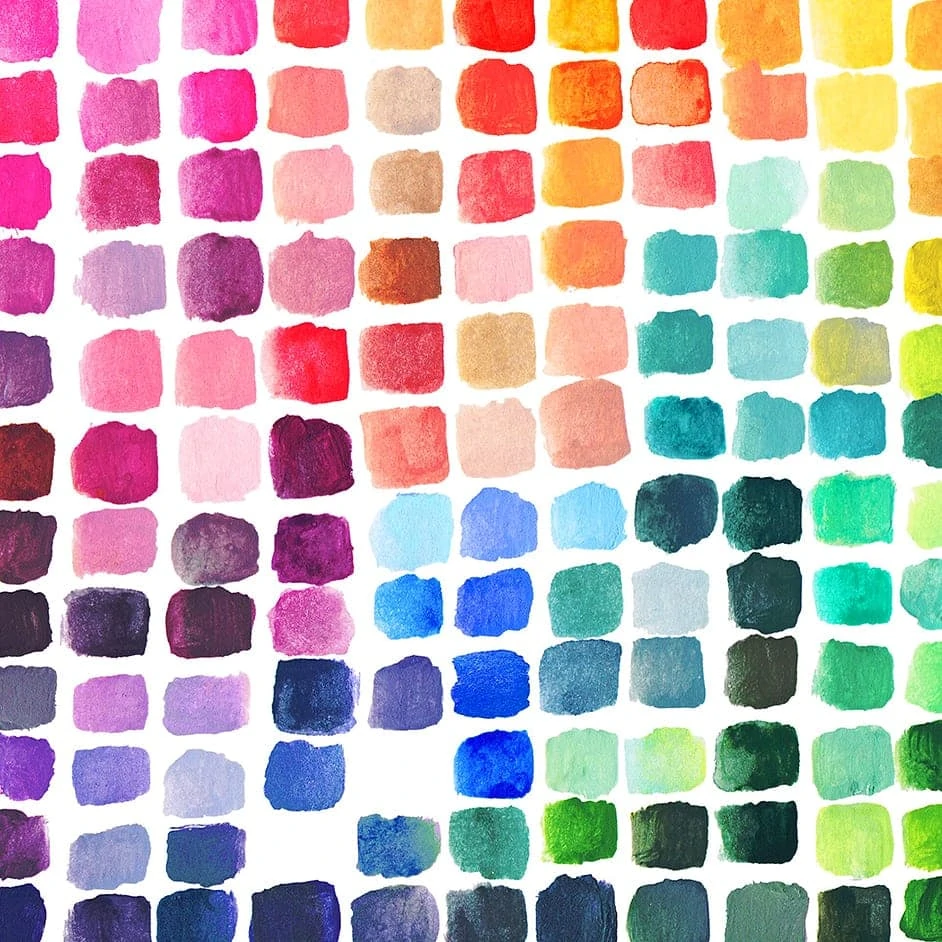
The Mixing Ratios of Light and Dark Colors
If you want to darken a light color, you only need a small amount of dark color. For shades you want to lighten, the opposite is true. For example, if you want to lighten a dark brown, you need to use a lot of white color.
Be especially careful with dark colors such as brown or black, as the result can only be corrected with much lighter color.
The Optimal Combination of Opaque and Covering Colors
The opacity of your paint is very similar to mixing light and dark shades: to make an opaque paint opaque, you only need a small amount of opaque paint. To make an opaque color opaque, you only need a small amount of opaque color, whereas to make an opaque color translucent, you need a lot of transparent or opaque color.
Mixing of White and Black Color
You get black by mixing the primary colors yellow, blue and red. However, we advise you to buy white and black, as you will need these two colors again and again.
What are Complementary Colors?
Complementary colors are the colors that are opposite each other in the color wheel, i.e. they represent the opposite color. If you use complementary colors in an image, this can be irritating for the eye. But if you use these colors consciously, you can also create exciting effects.

aekikuis / shutterstock.com
Do not Mix Colors Completely
For a natural result of the color, you should not mix the used colors too thoroughly. This creates small differences in color within the mixed color, which makes a much more harmonious impression, especially in natural images.
Mixing Colors – Warm and Cool Shades
Some colors are perceived as warm and others as cool. Warm colors include yellow and red, while blue is a cool color. It is also possible to mix these characteristics, for example, to create a warm sky blue. If you mix two warm colors together, the result is also a warm color. Mixing a warm and a cold color tone, on the other hand, results in a rather neutral color tone.
Mixing Clean Green
To obtain a clean and beautiful green, we advise you to mix lemon yellow and phtalo blue. You can also have a look into our in-depth guide on how to mix green.
Which Color Shades are Suitable for Mixing Clean Colors?
The following shades provide a good base:
- Cadmium red
- Phthaloblue
- Ultramarine blue
- Phatogreen
- Lemon yellow
- Cadmium yellow

Mixing Gray and Brown
The tertiary colors gray and brown are obtained by mixing all three primary colors in different proportions. We have a separate tutorial on how to mix gray colors.
What Colors Make Brown
If you want to create a nice earthy brown tone, you should try the combination of red and green.
- Light brown: Gradually add white color to your brown mixture until you reach the desired shade. You can add red or yellow to get a warmer shade and prevent the color from becoming too beige and soft. If you want a cooler shade, you can add a touch of blue color.
- Warm brown: Try the gradual addition of different red and/or yellow color. If the mixture is too warm for you, you can cool it down a bit by adding blue. Warm brown tones are good for painting bricks, wood tones or trees in sunlight.
- Cool brown: For a cool shade of brown, you can add some blue color to your base brown mix. If the mixture becomes too blue, you can add some red or yellow color to get a neutral brown again. Cool browns can be used to paint trees in a wintery atmosphere and dark hair or fur.
- Darker brown: To mix a dark but strong brown, you can add a dark blue. You should avoid mixing black with brown as much as possible, as this will only give you a muddy shade. Darker browns are excellent for painting twilight scenes or brunette hair.
If you want to know more, check out our guide on how to make brown paint.
How to Make Gray
A nice gray color is obtained by mixing a lot of blue color with a small amount of orange color and then adding white color until the desired brightness is achieved.
If you want to get a delicate shade of gray, you can mix a lot of white color with a little red and green. For a warm shade of gray you should try mixing violet with yellow.
What Colors Make Purple
Since violet is the complementary color to yellow, you get violet by mixing blue and red.
Purple is a violet with a high blue content, therefore the mixing ratio must not be 1:1. So if you add a little more blue than red, you get purple. By increasing the amount of blue you can adjust your purple tone individually. Learn more about in our article what colors make purple.
What Colors Make Orange
- Reddish Orange: Mix one part of yellow color with two parts of red color. To get an intermediate tone of red and orange, you can alternatively mix one part of red with one part of orange color.
- Yellowish orange: Mix one part red paint with two parts yellow paint. To get an intermediate shade of yellow and orange, you can alternatively mix one part yellow with one part orange.
We have compiled everything about what color makes orange in a separate article.
What Colors Make Green
To mix the one dark green color, different colors are needed. Often there is one green color in the paint box. If this color is too light for you, you can simply mix it with some black color so that the green becomes darker and darker. Check out our what colors make green guide for more tips and tricks.
To prevent the green from becoming too dark, you should be careful not to add too much black color too quickly. This way you can make sure that you get the dark green you want without the color becoming too dark.
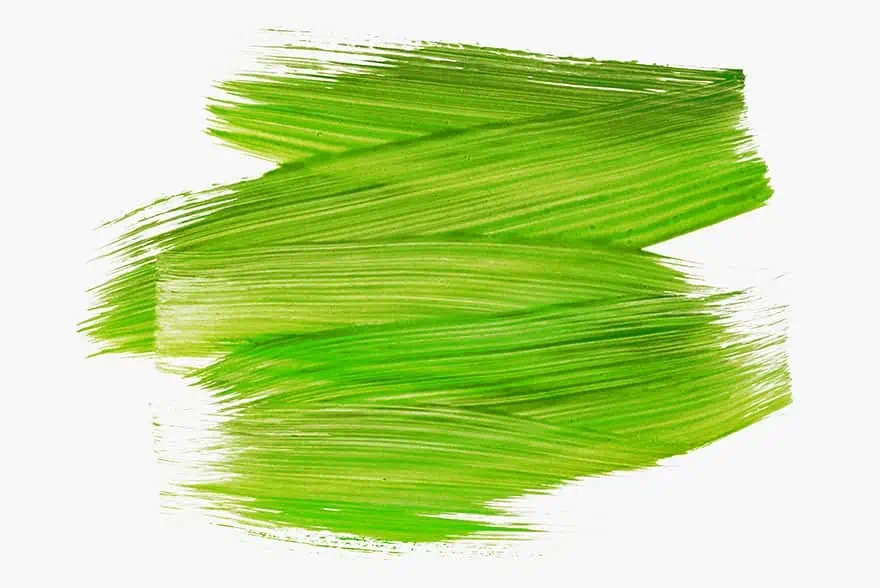
What Colors Make Pink
A really popping-out hot pink color tone can be mixed with one part blue (for example Phthalo Blue), two parts red, and about one part violet. After thorough mixing, you can add a small amount of white to lighten your mixture up a bit up to your liking. You can find more information in our what colors make pink guide.
Tint Down
If one color seems too intense to you, you can soften it with a complementary color or a little brown. For example, you can soften too harsh gray tones with a little umbra. You should not use black for this purpose, as the color then appears a little dull and not soft.
Clean Tertiary Colors
To obtain clean tertiary colors, you should follow the following basic rule: The more different colors you mix, the muddier the result. If your colors look muddy, there is often only one solution: mix the colors again.
Test the Colors Before Painting
Before you really start painting, it is recommended to test the mixed colors on a piece of paper or canvas from time to time, because the colors on paper have a different effect.
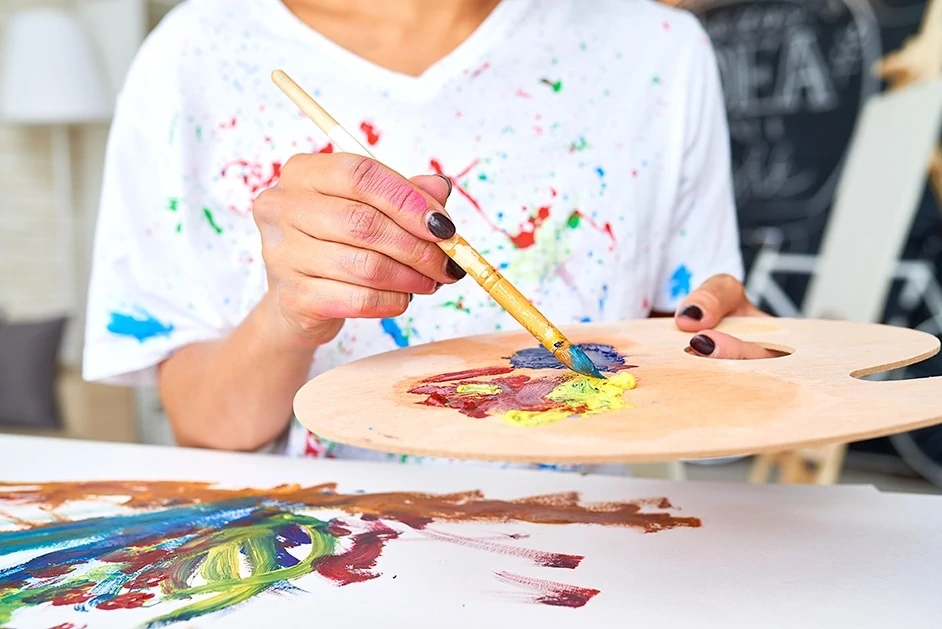
Optical Mixing of Colors (Divisionism)
Besides the physical mixing of colors, there is also the technique of optical color mixing. You paint two colors next to each other, which are optically mixed by the human eye when viewed. This technique is called divisionism in technical jargon.
Set Certain Colors Next to each Other For a Higher Intensity
To make lighter colors stand out more, you should paint them next to neutral colors. A red looks more intense if it is painted next to a gray tone. With dark colors, it behaves exactly the other way around. For example, a dark green will be more intense if it is surrounded by a light color like lemon yellow.
Depth and Space Through the Use of Warm and Cool Colors
The juxtaposition of warm and cool colors is another optical color mixing technique. This is done because the eye perceives cool colors as being further away than warm colors. For example, if you want the eye to perceive a greater depth of the canvas when looking at it, you can place warm earth colors in the foreground of a landscape picture and use cooler and cooler colors towards the horizon.
Mixing Acrylic Colors
When mixing acrylic paints of different manufacturers and different compositions, undesirable chemical reactions can occur. Therefore you should only mix acrylic paints from the same product line. Self-produced and mixed colors should always have the same composition.
With regard to different color shades, mixing acrylic colors is possible at any time. For this purpose, special color cards and also color mixing tables are available from specialist dealers (e.g. paint and varnish dealers, handicraft supplies, paint manufacturers). So you can mix the acrylic colors either exactly according to the table or simply by feeling.
Best Way to Paint Corners Different Colors
Source: https://acrylgiessen.com/en/mixing-colors/

0 Response to "Best Way to Paint Corners Different Colors"
Post a Comment